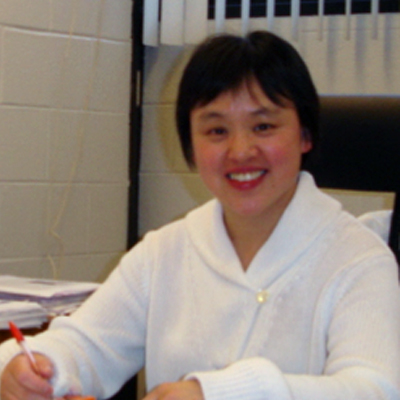Faster, cheaper, and smarter ways to produce graphenes for specific applications
Due to its excellent electronic, thermal, and mechanical properties and its exceptionally large surface area and light weight, graphene is considered the most powerful man-made nanomaterial that holds great potentials for a wide range of beneficial applications. However, current rate of graphene production far exceeds the demand, due to the lack of “killer applications,” as most commercially available graphene are not tailored specifically for a targeted application and offer only marginal benefits over incumbent technologies. Graphene are being produced in mass with no specific purpose, because “there is nothing graphene cannot do,” but studies show that different graphene structures are required to fit specific applications for optimal performance. Dr. Huixin He, Associate Professor of Chemistry at Rutgers University, fabricates graphene for targeted applications using energy efficiency and time- and cost-effective microwave chemistry. By exploring the novel properties of nanomaterials, including graphene, Dr. He hopes not only to improve or to develop novel, high-performance devices for detection and treatment of human diseases and renewable clean energy devices, but also to understand the correlation of their performances with the structures of the nanomaterials at the electronic and molecular level.
The microwave chemistry that Dr. He’s team leverages not only quickens the process of graphene fabrication -- taking only 30-60 seconds in lieu of the usual several days and hours, but also enables an energy-efficient development of high quality graphene with controlled structures. Currently, Dr. He’s lab specializes in generating graphene with controlled sizes from micrometers to nanometers, graphene with holey structures, and graphene doped with different heteroatoms. With collaborators her team develops nanographene as a multifunctional drug delivery vehicle that would target cancer cells or HIV virus and HIV virus infected cells. Extensive collaboration is also underway to use holey graphene/heteroatom doped graphene as metal free carbocatalysts for various organic synthesis and industry relevant oxidation/reduction reactions. Her own team is also exploring the highly conductive graphene for battery applications, and the holey graphene/heteroatom doped graphenes for metal free electrochemical catalysts for in-situ generation of H2O2 and oxygen reduction reactions. The team has already developed various microwave-based fast protocols for scale production of various highly conductive and stable graphene sheets with controlled lateral sizes, holey structures, and heteroatom doping, whose prototypes are ready for large scale production and application. Within two years of research the team can reach important milestones of large scale production of various graphene.
Dr. He’s current research is three aspects:
- To develop a fast, controlled, and environment-friendly way to produce high quality graphene with tailored structures for specific applications using microwave chemistry.
- To use controlled graphene to develop next generation battery with high energy density and capacity for electric vehicles to charge faster and last longer.
- To use controlled graphene to develop a metal free, sustainable, and green catalyst that will replace the use of transition metal by current industries, which are very expensive and toxic to our environment.
Bio
Dr. Huixin He is an Associate Professor of Chemistry at Rutgers University, whose laboratory pursues research in the field of nanoscale chemistry. She explores the novel properties of nanomaterials for their applications in molecular detection, drug delivery and renewable energy devices, hoping not only to improve or to develop novel devices for detection and treatment of human diseases, and for conversion of clean energy by using these nanomaterials, but also to understand the correlation of their performances with the structures of the nanomaterials at the electronic and molecular level. To this end, she and her team use a mixture of nanoscopic and macroscopic techniques to characterize the electronic, electrochemical and optical properties of the nanomaterials and to evaluate the performance of the nanodevices made from the nanomaterials.
When she was a high school student, Dr. He was inspired by her chemistry teacher who knew all the concepts and made the phenomena all the more interesting. She dreamed of becoming a high school chemistry teacher just like her teacher, and when she went to college she chose a teaching university to pursue this dream. When she became a Ph.D. student, though, Dr. He’s supervisor told her about the power of nanotechnology by comparing it to a library -- what if all of the storage that is needed in a library to store so many books that people want to read can be fit into a device with the size of a penny that you can carry around with you wherever you go? Such was the power and access that nanomaterials could give us, and as a girl born in countryside where people had little money or access to books, Dr. He was fascinated by the wonderful phenomenon and properties of materials at nanometer scales. Throughout her research career, Dr. He has been developing ways to leverage these unique properties of nanomaterials and continues to advance nanoscience and nanotechnology to fabricate something that is truly beneficial to our real life -- all the while still teaching, though not in a Chinese high school. But the dream continues.
Outside of her research, Dr. He enjoys to play ping pong, especially with her son who is being coached by a former Chinese professional player who used to be in the Chinese National Table Tennis Team and has won many championships.
For more information, visit http://andromeda.rutgers.edu/~huixinhe/huixinhe.html
In the News
Materials Views China
Rutgers News
Publications
Awards
American Chemical Society PRO BONO Award, 2015
Wong K. C. (Hong Kong) Research Award, 2011
Featured at Rutgers Today, Feb. 25 2010
The Rutgers Presidential Fellowship for Teaching Excellence, 2009
Patents
U.S. Patent No. 13/776,366: "Direct Production of Large and Highly Conductive Graphene Sheets and Nanographene sheets"
Huixin He, Pui Lam Chiu, Daniel Mastrogiovanni and Eric Garfunkel. Filed on 02/25/2013.
PCT International Application No. PCT/US15/24710: "Eco-Friendly Production of Highly Conductive and Clean Graphene Dispersions"
Huixin He, Keerthi Savaram, Mehulkumar Patel. Filed on 04/07/2015.


